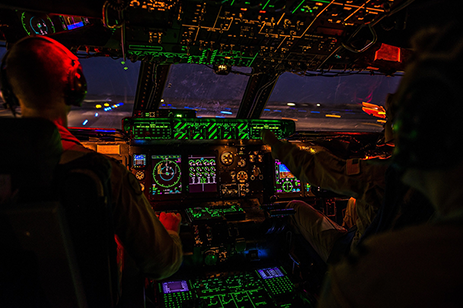
A customer contacted Curtiss-Wright with the need to upgrade a fleet of tactical aircraft. The aircraft incorporated a variety of sensors and computers for their combat mission, and throughout the years, the cockpits had become cluttered with several legacy systems. Each system was running its own processors and displays, adding weight and occupying limited space on the platform. The numerous links between systems each needed specialized cabling, and the constant crowding left no room for upgraded systems or modernized sensors.
In addition, pilots had to interpret information from a multitude of small displays in order to build a full picture of situational awareness. The complexity of this customer’s mission system, and the requirement for new hardware to interface with legacy hardware, made it a very difficult upgrade.
Our customer’s cockpit modernization improved pilot situational awareness while greatly reducing the workload required to execute their missions. The new system provides the capabilities of numerous legacy systems with significantly lower SWaP, providing the flexibility to add in new modules and sensors in the future as requirements evolve. Their new system is power efficient, easier to maintain, and more reliable, improving platform mission availability. New capabilities can be added via software that combines data from multiple sensors and systems and intelligently communicates the results to the crew. Not only that, the pilots now have no need to manually transfer data from one system to another, which reduces the rate of user data entry errors.
In addition, moving to a modular COTS architecture provided a highly cost-effective hardware platform with room for growth. The Curtiss-Wright product roadmap provides the option to upgrade individual modules as new technology becomes available, with drop-in replacement products that increase processing power and add new features.
Download the case study to learn more.